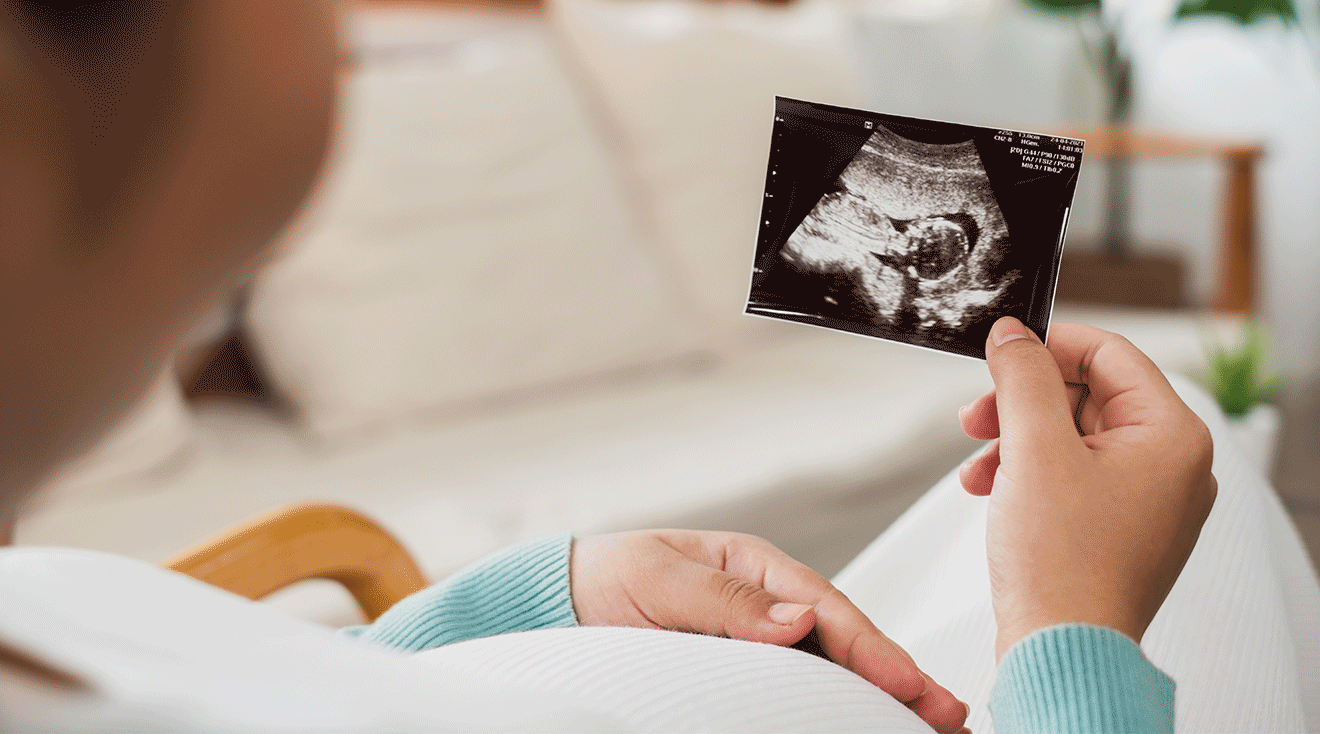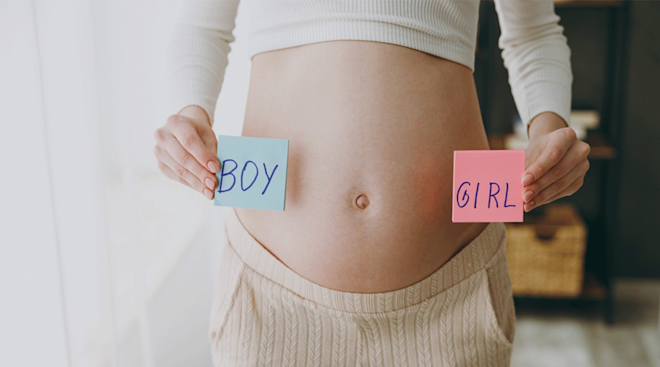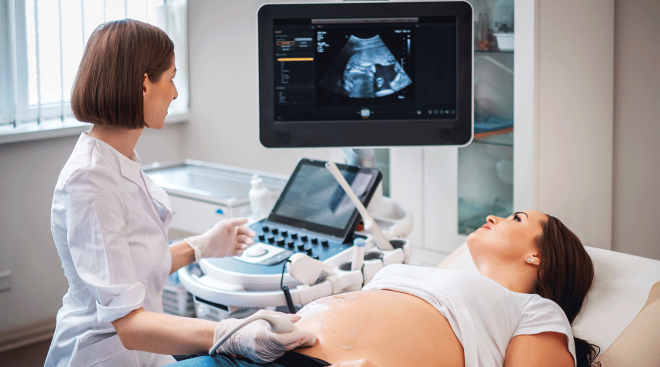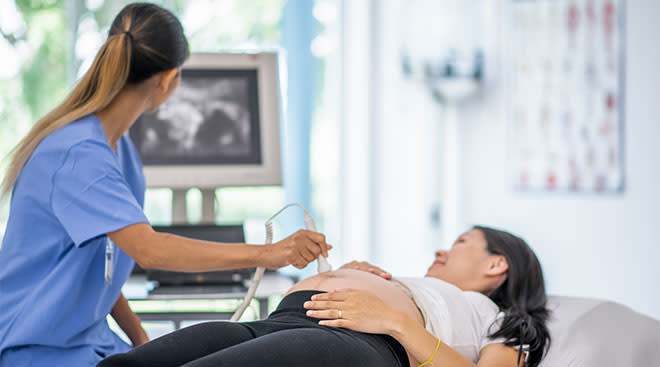Can You Determine Baby's Sex Using the Ramzi Theory?
The internet is chock-full of unscientific, occasionally wacky theories to help you predict baby’s sex. And while the only reliable ways to determine baby’s sex during pregnancy take place at your doctor’s office (more on that later), parents-to-be still may want to test-drive some more offbeat methods—you know, just for fun. As long as we’re playing along, let’s discuss the Ramzi theory—which claims that you can find out baby’s sex early on in pregnancy simply by looking at the location of the placenta on an ultrasound. So how accurate is Ramzi theory? Spoiler alert: Not very, but it can’t hurt to give it a whirl. Read on for what to know about Ramzi theory, including when and how to try it.
The Ramzi theory claims that you can predict baby’s sex based on where the placenta is situated in the uterus during early pregnancy—as early as 6 weeks. First published online by a media company—not a peer-reviewed journal—the theory has been attributed to Saad Ramzi Ismail, PhD. He claimed that if your placenta forms on the right side of the uterus, you’ll have a boy, and if it forms on the left side you’ll have a girl.
Many experts find that Ramzi theory is around 50 percent accurate—about the same as a coin flip. (Or your own random guess!) “While the Ramzi theory is a fun anecdotal method for a predictor of fetal sex, I don’t find it to be generally very accurate,” says Andrea Sleeth, WHNP-BC, a board-certified women’s health nurse practitioner in Springfield, Missouri, and medical advisor at Wisp. “Ultrasound technicians and medical professionals don’t rely on this theory, as there’s no substantial evidence to support its accuracy.”
Kyle Graham, MD, a board-certified ob-gyn at Pediatrix Medical Group in San Jose, California, agrees. “There’s a 50 percent chance with simple guessing that the sex is male or female,” he says. “I’d venture to say the Ramzi theory is about that accurate.”
A peer-reviewed study published in the journal Ultrasound in Obstetrics & Gynecology examined 277 pregnancies and concluded that there’s no relationship between placental location and fetal sex.
Despite the Ramzi theory’s lack of scientific credibility, pregnancy message boards are ablaze with guesses of baby’s sex based on ultrasound pictures. You can ask your ultrasound technician which side your placenta is on as early as 6 weeks into your pregnancy. Again, according to the theory, if an ultrasound shows the placenta on the left side of the uterus, it’s a girl; if the placenta on the right side, it’s a boy. Of course, keep in mind that this is not a scientifically accurate method—it’s just for fun. You’ll find out whether baby’s a boy or a girl for sure soon enough!
If you’d like to see Ramzi theory examples on ultrasounds, here are a couple.
Ramzi theory boy example
Ramzi theory girl example
If you’re pregnant, there are way more accurate ways to determine baby’s sex than with the Ramzi theory. Here are a few prenatal tests that’ll tell you whether baby’s a boy or a girl:
- NIPT (non-invasive prenatal testing). Typically done between weeks 10 and 12 of pregnancy, the NIPT is a common screening test done through a blood draw, says Graham. It also tests for chromosomal abnormalities, and it’s extremely accurate (about 99 percent) at determining baby’s sex.
- Anatomy scan. During the mid-pregnancy ultrasound, which typically happens at around 20 weeks, your technician will take a careful look at baby and can likely tell their sex (if you haven’t found out already).
- Chorionic villus sampling (CVS). CVS is a genetic test that takes a small sample of cells from the placenta, says Cleveland Clinic. It also tests for various health conditions, and it’s one of the most accurate ways to determine baby’s sex, says Graham.
- Amniocentesis. Amniocentesis involves a provider inserting a needle to take a small amount of amniotic fluid from your uterus to test for certain conditions, explains Cleveland Clinic. Graham says that it’s also an extremely accurate way to tell whether baby is a boy or a girl.
Using unconventional methods like the Ramzi theory can be an entertaining way to pass the time while you’re pregnant. Luckily, modern medicine is there when you need it.
Please note: The Bump and the materials and information it contains are not intended to, and do not constitute, medical or other health advice or diagnosis and should not be used as such. You should always consult with a qualified physician or health professional about your specific circumstances.
Plus, more from The Bump:
Kyle Graham, MD, is a board-certified ob-gyn at Pediatrix Medical Group in San Jose, California. He earned his medical degree from Keck School of Medicine at the University of Southern California in 2015 and has gone on to practice worldwide, including medical missions in Uganda and Guatemala.
Andrea Sleeth, WHNP-BC, is a board-certified women's health nurse practitioner in Springfield, Missouri, and medical advisor at Wisp. She has a Master of Science in Nursing from Frontier Nursing University in Kentucky, and has over a decade of experience in in-office ob-gyn, bedside labor and delivery, perinatal education and telemedicine.
Contemporary OB/GYN, The Relationship Between Placental Location and Fetal Gender (Ramzi’s Method), June 2011
Ultrasound in Obstetrics & Gynecology, The Role of Placental Location Assessment in the Prediction of Fetal Gender, December 2010
Norwegian Institute of Public Health, Non-Invasive Prenatal Testing (NIPT) for Foetal Sex Determination, December 2016
Cleveland Clinic, Chorionic Villus Sampling for Prenatal Diagnosis, June 2021
Cleveland Clinic, Amniocentesis, April 2022
Learn how we ensure the accuracy of our content through our editorial and medical review process.
Navigate forward to interact with the calendar and select a date. Press the question mark key to get the keyboard shortcuts for changing dates.





















































